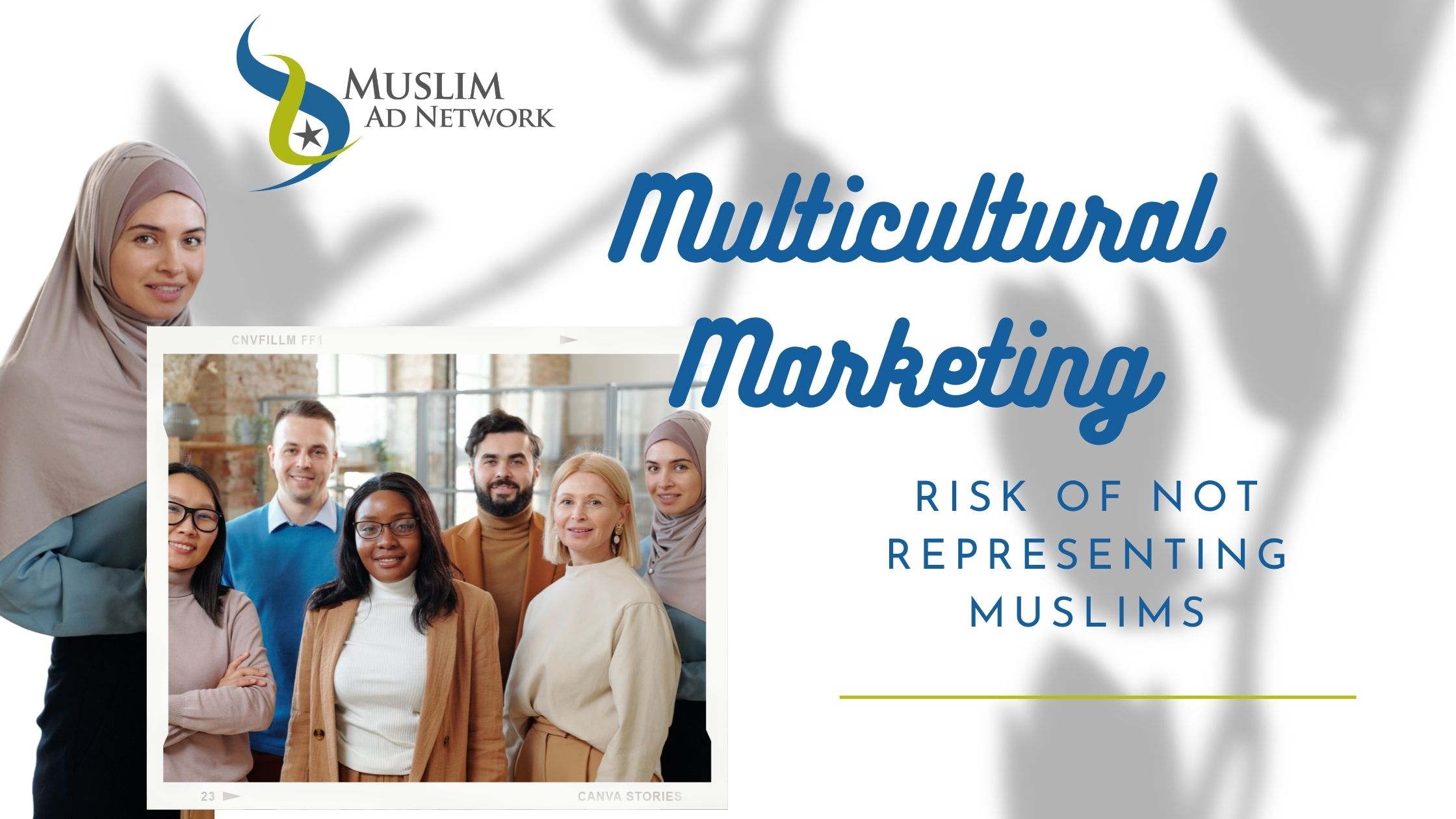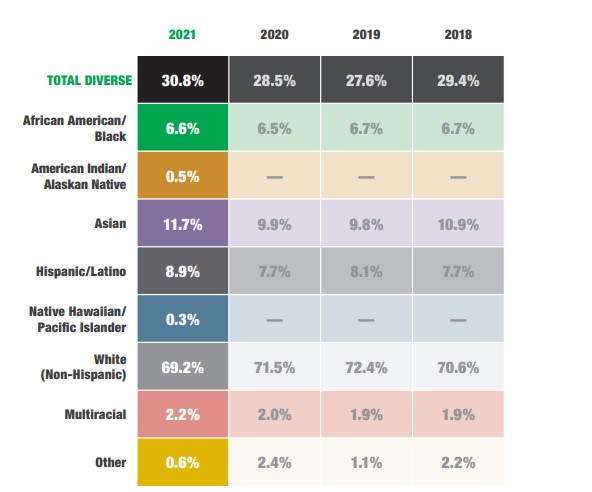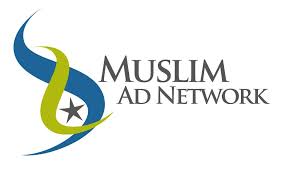
What Does Multicultural Marketing Really Mean?
Simply put, multicultural marketing is the external marketing strategy that is the result of an internal diversity and inclusion program of a business or organization.
Isaac Mizrahi, of CMO Network, in his article for Forbes, Diversity And Inclusion And Multicultural Marketing Are Not The Same explains that:
“Diversity helps in bringing the right representation, and inclusion is a must to having these voices heard at the decision-making level.”
In the same article, he quotes Gonzalo del Fa, President of GroupM Multicultural, who defines multicultural marketing as:
“…an external effort for a corporation to promote and sell products or services, including market research and advertising to one or more audiences of a specific ethnic background.”
Multicultural marketing expert and founder of HYPE, Juanita Velez sums it all up better than anyone else:
“You may have heard of the party analogy when defining Diversity, Equity, and Inclusion (DEI):
- Diversity is where everyone is invited to the party
- Equity means that everyone gets to contribute to the playlist
- Inclusion is when everyone has the opportunity to dance
While DEI looks to shape corporate cultures to be more diverse, equitable, and just; inclusive multicultural marketing aims at growing the business by investing in research and strategic initiatives to authentically market to multicultural audiences.”
Source: Let’s Call It What It Is: Multicultural Marketing, Not Diversity, Equity, and Inclusion
Multicultural Marketing Has Come a Long Way
In November 2021, the Association of National Advertisers published a report in which they concluded that:
“…finally, there has been progress in increasing ethnic diversity in the advertising/marketing industry. The overall ethnic skew of the marketing/advertising industry is more diverse than ever, at 30.8 percent, yet despite the progress, there is still work to be done.”
Although multicultural marketing has come a long way, there are still some serious barriers that need to be overcome.
Some of the main reasons for some brands being left behind according to the Association of National Advertisers mentioned (in their 2018 Multicultural and Inclusive Benchmark Survey) are very stereotypical:
- 13% of brands believe they do not need to target diverse groups directly because they reach everyone with their general marketing efforts.
- 14% think they do not need to segment because purchase triggers and universal truths for their brands are the same for all segments.
- 15% do not have the bandwidth or expertise.
Luckily, for those who do want to pursue a more diverse and inclusive option we wrote extensively about taking the right steps for better diversity and inclusion in your marketing in our article How to Target Advertisements to Muslims with Impactful Diversity and Inclusion Marketing.
Although our articles address businesses and organizations that target Muslims, the frameworks we use apply to any entity targeting any audience.
Here are some more relevant topics on diversity and inclusion:
- Muslim Brands Must Be at the Forefront of Disability-Inclusive Marketing
- How to Create an Inclusive Eid Ad Campaign
- Catering to Black Muslim Consumers: What Every Business Ought to Know
- Hispanic American Muslim Consumers – What You Need to Know
So, What’s Wrong With the Current Picture?
I recently enrolled in the AdAge Next: Multicultural Marketing event and was shocked to see the dominance in representation by some groups and the lack of representation by others.
AdAge is an excellent source of knowledge for marketers and advertisers. However, they can only present what’s available in the real world. If we go back to the Association of National Advertisers, which is also a very competent organization, you can immediately see that the groups represented in their 2021 report are those who have been speaking out loudly for their rights of representation in the past decades.

Since Muslim Ad Network specializes in advertising to Muslim consumers we will focus on the absence of Muslim representation in the current efforts for more inclusive multicultural marketing and advertising.
The Case for Muslim Representation in Multicultural Marketing
The global Muslim market is heading towards $3 trillion and the American Muslim market is being likened to the Hispanic market in the 90s:
“… advertising executives, used to dividing American consumers into every sort of category, say that ignoring this group – estimated to be about 5 million to 8 million people and growing fast – would be like missing the Hispanic market in the 1990s.”
Source: New York Times, April 27, 2007
So we are talking about a substantial market opportunity. Even if businesses and brands didn’t feel obliged for ethical reasons to represent Muslims in their marketing and advertising media, they would be smart to consider doing it for their bottom line.
Why do Muslims Need to Be Advertised to Separately?
It might not register at first how important it is for Muslims to be targeted by marketers and advertisers separately. One could say that just like Christians, Muslims already fall under many of the groups already being represented if not all of them.
Yes, that is true, however, where Christians today would buy a house using a mortgage that includes interest, wear the same outfits that your favorite celebrity wore this year at the Oscars, or eat at any restaurant, the overwhelming majority of Muslims can’t.
Despite the ethnic diversity of Muslims, the overwhelming majority buy products and services that are compatible with Islamic laws and jurisprudence a.k.a Shariah.
This shapes not only their buyer behavior, but also defines their perspective of marketing and advertising material that they see on their screens or outside on billboards.
In a recent consumer survey that we conducted for Ramadan:
“An overwhelming 92% are more likely to buy from brands that understand their faith. This does not mean that your marketing team should become scholars in Islamic theology. However, a basic understanding and adherence to Islamic Advertising Principles should help.”
It is, however, the responsibility of Muslim marketing and advertising experts to become loud voices and participate on the podium to ensure they are part of the conversation.
Organizations like the Association of National Advertisers and Ad Age can only present and amplify what is in front of them.
Meanwhile, the Muslim consumers and those who target them can get stronger by meeting at a central platform that enhances the Muslim consumer industry.
Muslim Ad Network is the biggest of those platforms with over a decade of experience in bringing Muslim consumers and brands together. Contact Muslim Ad Network today to discuss the possibilities for your business or organization.
start targeting muslim consumers